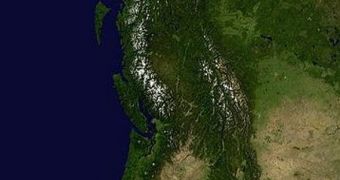A new series of geological observations have determined that there is a major risk of a huge earthquake striking the Pacific Northwest within the next half-century, researchers say. According to the team that conducted the work, a tremor the magnitude of those that struck Haiti and Chile earlier this year has a 33 percent chance of happening within this time frame. This leaves people, businesses and authorities very little time to prepare. If such as large tectonic event takes place, then even strictly-reinforced building codes won't prevent major damage and huge loss of lives.
The investigation was conducted on the Cascadia subduction zone, which is the area of the Pacific Northwest where the Pacific tectonic plate slowly grinds below the North American plate. As this happens, the two grind against each other. Like in any other subduction area, if the plates become locked to each other, then vast amounts of pressure will slowly begin to accumulate behind them. As this happens, the force will push against the spot where the locking has occurred, until it breaks. There is no way to relieve the pressure, other than when the plates themselves snap back on their course.
Whenever this happens, an earthquake occurs. Depending on how long the plate system spent in a lock-down, the tremor is stronger or lighter. Chris Goldfinger, the leader of the new study, and a marine ecologist at the Oregon State University, says that he and his team managed to obtain a very detailed image of what's going on in Cascadia, and adds that the data are not reassuring. In fact, they are frightening. “It is not a question of if a major earthquake will strike, it is a matter of when. And the 'when' is looking like it may not be that far in the future,” the expert explains.
Cascadia is in fact divided into four separate segments, and is not, as experts thought, a single subduction zone. This increases the risk of massive earthquakes ripping apart the entire fault line system, causing widespread devastation. Counter-intuitively, experts say that it would be best for the tremor to strike on land. If the epicenter is located just off the coast, residents in major cities alongside the US and Canada western coasts could have only up to 15 minutes of warning before a tsunami strikes. “The biggest offshore quake with a tsunami is certainly the worst case scenario for the coast, and it may be the worst case for inland cities also,” the expert adds, quoted by LiveScience.

 14 DAY TRIAL //
14 DAY TRIAL //